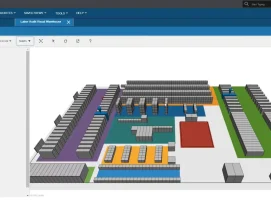Understanding VPAT and Accessibility Conformance Reports
In today’s digital world, accessibility is not just a best practice—it is a necessity. Organizations, businesses, and government agencies must ensure that their products, websites, and software are usable by everyone, including individuals with disabilities. Accessibility compliance not only aligns with ethical standards but also protects businesses from legal risks and improves overall user experience. One of the most important tools for demonstrating accessibility compliance is the Accessibility Conformance Report, commonly known as VPAT.
What Is a VPAT?
VPAT stands for Voluntary Product Accessibility Template. It is a document that outlines how a product or software meets accessibility standards and guidelines. A VPAT is used by vendors, developers, and organizations to provide transparency about their product’s accessibility features and limitations. The template details how the product conforms to standards such as WCAG (Web Content Accessibility Guidelines), Section 508 of the Rehabilitation Act, and other accessibility regulations.
VPATs are essential for organizations that need to evaluate and procure accessible products. They provide a structured format for presenting accessibility information, allowing buyers, procurement teams, and compliance officers to make informed decisions.
Accessibility Conformance Report (ACR)
The Accessibility Conformance Report, often abbreviated as ACR, is another term commonly used in conjunction with VPATs. The ACR summarizes the findings from a VPAT assessment, highlighting areas where the product meets or falls short of accessibility requirements. It is a clear and concise way for vendors to demonstrate compliance and for organizations to review accessibility performance.
An Accessibility Conformance Report typically includes:
- Product name and version
- Applicable accessibility standards (e.g., WCAG, Section 508)
- Detailed conformance results for each criterion
- Remarks or explanations for partial or non-conformance
- Contact information for additional accessibility inquiries
The ACR provides a reliable reference for stakeholders evaluating digital accessibility and helps ensure that products meet legal and organizational requirements.
Versions of VPAT
VPATs have evolved over time to align with changing accessibility standards. Some common versions include VPAT 2.4 and VPAT 2.5.
- VPAT 2.4: This version includes updates to better reflect the Web Content Accessibility Guidelines and Section 508 requirements. It is widely used by vendors to provide detailed accessibility information.
- VPAT 2.5: The latest version of VPAT includes additional fields and clarifications to improve transparency, usability, and accuracy of accessibility reporting. VPAT 2.5 aligns with modern accessibility standards and provides organizations with a clearer understanding of product conformance.
Both VPAT 2.4 and VPAT 2.5 are structured to provide a consistent format for documenting accessibility compliance. Using the correct version ensures that the accessibility report is current and relevant to applicable standards.
Importance of VPAT Compliance Testing
VPAT compliance testing is a critical step in the accessibility evaluation process. It involves assessing a product against accessibility standards, identifying issues, and documenting results in a VPAT template. Testing ensures that the Accessibility Conformance Report accurately reflects how the product performs for users with disabilities.
VPAT compliance testing typically involves:
- Reviewing the product against WCAG guidelines
- Testing functionality with assistive technologies such as screen readers and keyboard navigation
- Identifying accessibility gaps and documenting partial or non-conformance
- Providing detailed explanations for each accessibility criterion
By performing thorough VPAT compliance testing, organizations can confidently produce accurate VPAT reports and Accessibility Conformance Reports. This testing is essential for procurement, regulatory compliance, and user experience improvements.
Voluntary Product Accessibility Template (VPAT Template)
A VPAT template provides a standardized format for reporting accessibility conformance. The template organizes accessibility criteria into sections and allows vendors to indicate whether the product:
- Supports the criterion fully
- Supports the criterion partially
- Does not support the criterion
- Is not applicable
Using a VPAT template ensures consistency and clarity in reporting. Organizations can compare multiple products, identify accessibility strengths and weaknesses, and make informed decisions when selecting software or digital tools.
VPAT templates may include examples, references to WCAG success criteria, and additional guidance to help vendors complete the report accurately. Some organizations also provide VPAT template examples to illustrate how to document accessibility conformance effectively.
VPAT Assessment and Reporting
VPAT assessment is the process of evaluating a product’s accessibility features and documenting the results in a VPAT or Accessibility Conformance Report. This assessment helps organizations:
- Verify that products meet legal accessibility requirements
- Provide transparency to stakeholders and users
- Identify areas for improvement in product design and functionality
- Ensure that accessibility is considered throughout the product lifecycle
The VPAT report serves as an official record of accessibility performance, providing a clear picture of compliance with WCAG, Section 508, and other relevant standards. A well-prepared VPAT can also serve as a valuable tool for internal teams, helping developers address accessibility issues during product updates.
WCAG Compliance and Testing
WCAG compliance is a key focus of VPAT assessments. The Web Content Accessibility Guidelines provide internationally recognized standards for web accessibility. WCAG guidelines cover various aspects of digital content, including text readability, color contrast, keyboard accessibility, multimedia accessibility, and navigation.
WCAG testing involves evaluating a product or website against success criteria at different levels: A, AA, and AAA. Level A represents basic accessibility, Level AA addresses common barriers, and Level AAA provides the highest level of accessibility. Most organizations aim for WCAG Level AA compliance as a practical standard.
WCAG accessibility testing is an essential component of VPAT compliance. By aligning with WCAG guidelines, vendors demonstrate that their products are usable by a wide range of users, including those with disabilities. WCAG certification, although not mandatory, provides additional credibility and assurance of accessibility conformance.
Benefits of VPAT and Accessibility Conformance Reports
Implementing VPATs and Accessibility Conformance Reports offers multiple benefits:
- Transparency: Provides clear information on product accessibility
- Compliance: Helps meet legal and regulatory requirements
- Risk Mitigation: Reduces the likelihood of accessibility-related lawsuits
- Informed Decision Making: Enables organizations to select accessible products
- Continuous Improvement: Identifies gaps and opportunities for accessibility enhancements
- User Inclusion: Ensures that products are usable by individuals with disabilities, improving overall user experience
These reports also create a culture of accountability, encouraging vendors to prioritize accessibility during product design and development.
VPAT Template Examples and Best Practices
Organizations often refer to VPAT template examples to understand how to document accessibility conformance. Best practices for creating VPATs include:
- Using clear and concise language to describe accessibility conformance
- Providing detailed remarks for partial or non-conformance
- Referencing specific WCAG success criteria where applicable
- Ensuring consistency in reporting across different products
- Updating the VPAT regularly as products evolve
Following these best practices helps ensure that VPAT reports are reliable, accurate, and useful for both vendors and organizations evaluating accessibility.
Accessibility Conformance Report in Practice
An Accessibility Conformance Report typically accompanies product procurement, software development, or digital service deployment. Organizations use the report to review:
- Accessibility features of a product
- Limitations or partial conformance
- Compliance with WCAG guidelines and Section 508
- Recommendations for remediation
By carefully reviewing ACRs, organizations can make informed decisions, ensuring that digital products meet accessibility standards and provide inclusive experiences for all users.
Conclusion
VPAT and Accessibility Conformance Reports play a vital role in promoting digital accessibility. They provide a structured and transparent way to communicate a product’s compliance with accessibility standards such as WCAG and Section 508. By using VPAT templates, performing VPAT compliance testing, and documenting results in Accessibility Conformance Reports, organizations can ensure that their products are inclusive, compliant, and user-friendly.
VPAT assessments, reports, and templates support informed decision-making, risk mitigation, and continuous improvement. WCAG compliance testing and certification further enhance credibility and demonstrate a commitment to accessibility. For businesses, vendors, and organizations, prioritizing accessibility through VPAT and ACR processes is not only a legal requirement but also a strategic advantage, ensuring that digital products are usable by everyone, regardless of ability.
Investing in VPAT and accessibility compliance ultimately creates a more inclusive digital world, strengthens user trust, and improves overall digital experiences. Accessibility Conformance Reports, VPAT templates, and WCAG testing form the foundation for a responsible and inclusive approach to digital product development and deployment.













